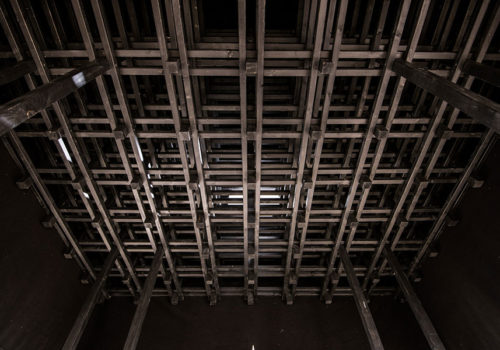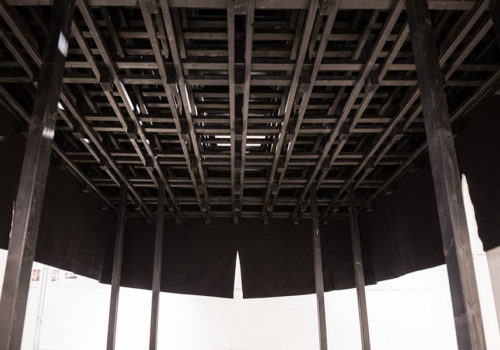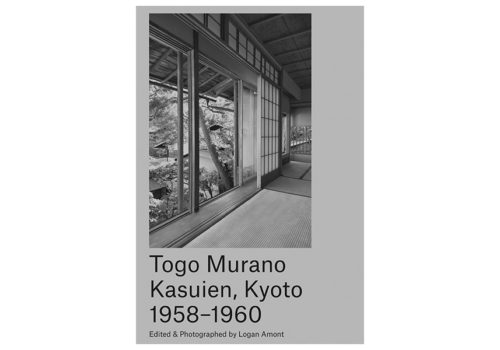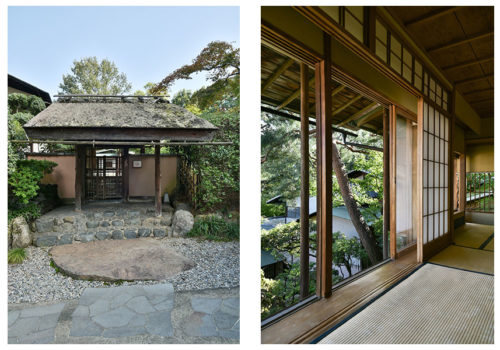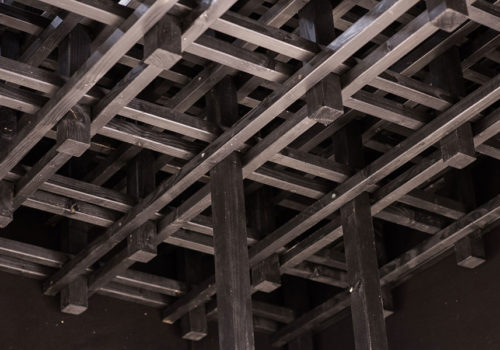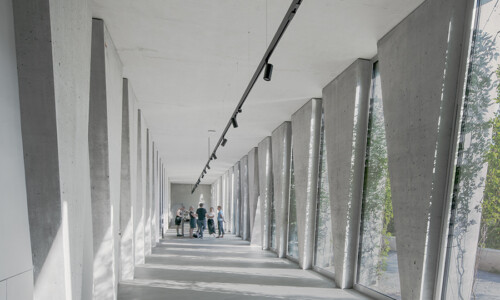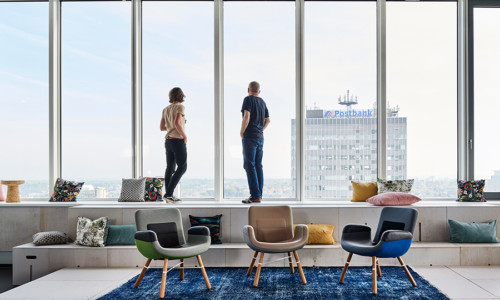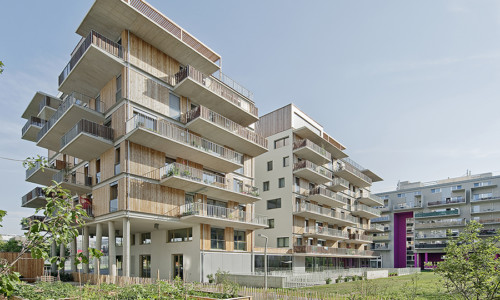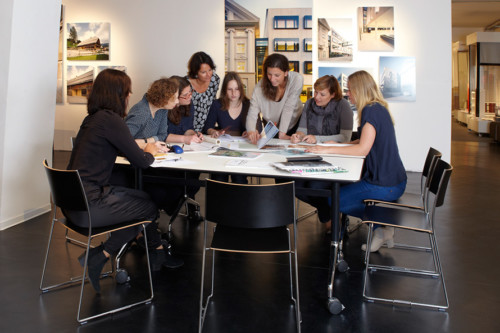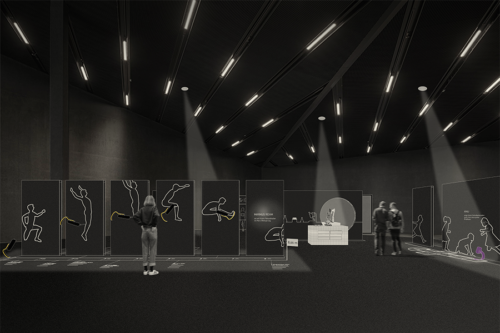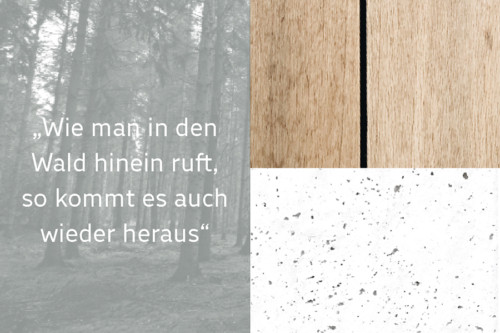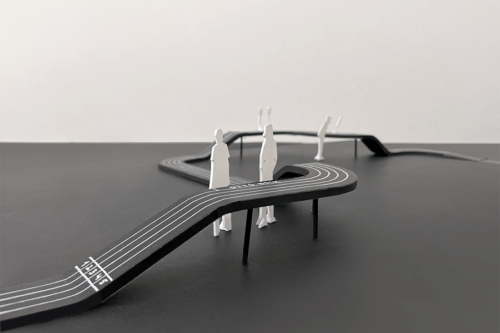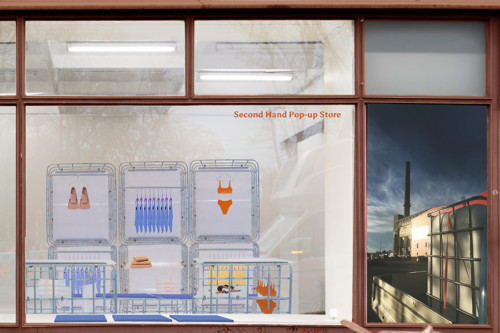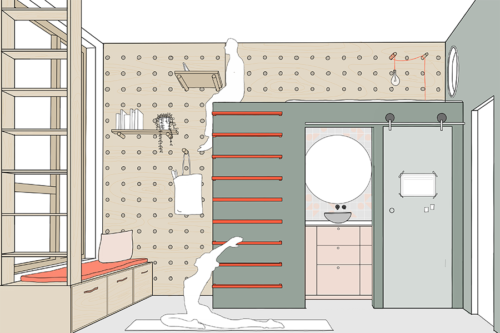Installation von Atelier Amont
- Installation von Atelier Amont, AIT-ArchitekturSalon München, 2020 | © Schelke Fotografie
- © Schelke Fotografie
- © Schelke Fotografie
- © Logan Amont
- © Logan Amont
- © Schelke Fotografie
- © Schelke Fotografie
Die Installation des US-amerikanischen Architekten Logan Amont, der mit seinem Büro Studio Amont in Basel ansässig ist, ist eine Hommage an traditionelle japanische Bauernhäuser. Als Sänfte ausgebildet, ist die Installation nicht nur begehbar, sondern auch mobil.
Zwei Aspekte dieses Entwurfs fallen besonders ins Auge: Zum einen ist es das Spiel von Licht und Schatten, zum anderen die geschwärzten Dachbalken, die in einer additiven Überlagerung einen atmosphärischen und überraschenden Raum ausbilden. Von Außen bleibt dem Betrachter der Innenraum durch das schwarze Tuch, das als Dach fungiert, verschlossen. Im Inneren der Installation empfängt einen zunächst ein gedämpftes Licht. Wendet man den Blick nach oben, eröffnet sich ein ungeahnter und durch die sich überlagernden Stäbe unendlich erscheinender Raum.
Im Rahmen der Ausstellung hat uns der Architekt Logon Amont einige Fragen zu seinem Entwurf und den Einfluss der japanischen Architektur auf seine Arbeit beantwortet:
Q1: What is the idea underlying the design and how does it articulate itself in the design?
Japanese farmhouses have a roof with layers of structure, overlapping into darkness, blackened from the smoke of the kitchen. It is a quality of light like that of a cave. Although incredibly surreal in this case, because in fact, we are looking towards the sun. The most extreme way of recreating this character, I thought, would be to build a palanquin, so that one could easily move around from place to place this cave-like light.
Q2: Is there a special experience that marks a key moment in your involvement with Japanese building culture?
Apprenticing as a gardener in Kyoto.
Q3: Which architect and building of Japanese culture (contemporary and historical) is most influential for you?
Togo Murano, 1891–1984.
Q4: Is there a vernacular architecture of this culture (contemporary and historical) that inspires you?
Yes, the soft ambiguity of the gardens and the stoic calmness of the buildings.
Q5: Are there essential differences and commonalities between the two building cultures?
This is complicated. What we in Europe think of generally, considering Japan, is related to a subculture of tea and roughness and shadows. As far as I know, it is mainly attributed to thoughts first developed by Sen no Rikyu, an individual who semisuccessfully redirected the culture of the country in the 16th century, and was ordered to commit suicide. Eventually, because he “went too far“ with all of that. However, it is a bit like saying that all of Americans are like Bob Dylan. Most, in fact, are not.
Atelier Amont, CH-Basel
Atelier Amont wurde 2019 vom US-amerikanischen Architekten Logan Amont gegründet. Aktuell ist das Büro in Basel ansässig. Die Projekte von Atelier Amont konzentrieren sich auf Gebäude und Gärten sowie Publikationen in der Schweiz und im Ausland. Die Arbeiten waren bereits in mehreren Ausstellungen zu sehen.
Atelier Amont was founded by the US-American Architect Logon Amant in 2019. Currently the office is based in Basel concentrating on buildings, gardens and publications in Switzerlond and obroad. Their works have already been shown in several exhibitions.
Weitere Informationen zur Gruppenschau sowie eine virtuelle Führung durch die Ausstellung finden Sie hier.
Kuratiert wurde die Ausstellung “Dialoge Japan : Europa” von Kristina Bacht und Çi?dem Arsu-Minuth (AIT-ArchitekturSalon) in Zusammenarbeit mit Nils Rostek (Kollektiv A).






